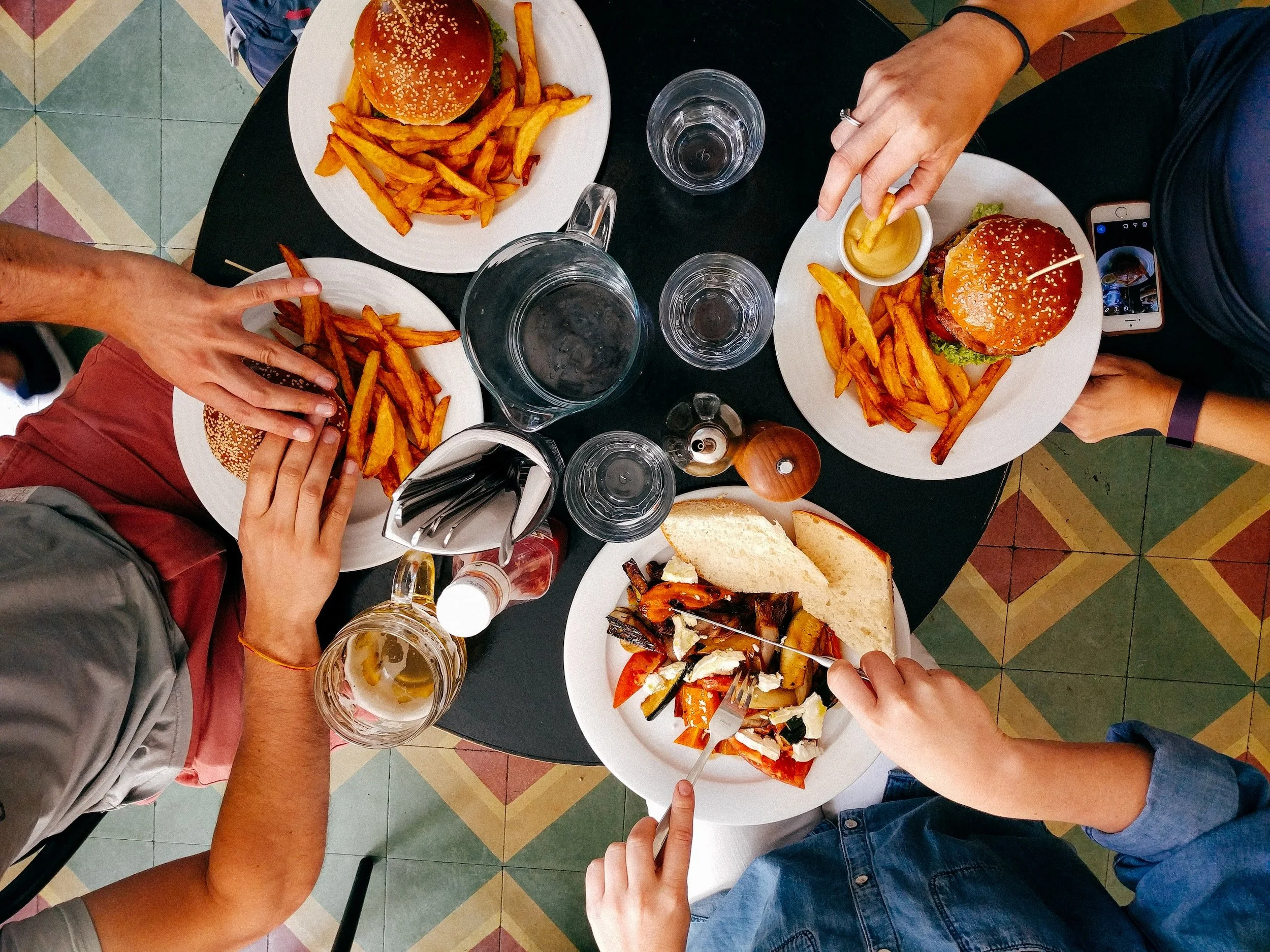How Do I Know If I’m Full?
Picture this…
You’re out with friends when you’re heaping plate of food comes out. Between chatting, eating, and other distractions, how can you recognize when you are full?
During my initial nutrition sessions with patients, I always ask: “Do you recognize what fullness feels like? Do you honor that feeling?” Most patients can easily recognize hunger, but struggle to recognize fullness.
Through following fad diets, eating on a schedule versus listening to body cues, distractions, and speed can all contribute to missing the very elusive fullness cues.
Here are 5 tips to help you recognize fullness cues.
1) Avoid Ever Getting to the Point of Starving.
In practice, I use something called the hunger and fullness scale with patients to help them gauge their bodies natural hunger and fullness cues.
One of the main principles is to avoid getting to a 1 on the scale which equates to the feeling of starving (low energy, stomach growling, headaches). This is the worst possible time to eat because you are zoned out, trance like eating, and not tasting each bite.
You’re also eating super fast and probably making more convenience choices versus nourishing choices you might have made if you avoided getting to starving. This may lead to overeating and feelings of guilt, regret, or shame.
The best time to eat is when you are ready for a light snack or complete meal. You will be able to prepare the meal or snack, and eat it mindfully - more likely capturing the fullness feeling.
A way to avoid ever reaching starving is to ensure you are eating consistent meals and snacks throughout the day. You’re only doing a disservice by saying, “If I can just hold off until dinnertime and forego a snack….” Trust me, you’ll end up eating way more calories versus having the snack and going to dinner not totally starving.
2) Create A Pause Point While Eating
Be intentional and give yourself a pause point midway through the meal to check in on your fullness cues.
This can be splitting your plate in half to create a visual “speed bump”, going to use the restroom, or drinking some water.
Sometimes stepping away from the food is best so you aren’t emotionally deciding to eat more food, but objectively listening to body cues.
Whatever you decide, do so mindfully and intentionally so at the end of the meal you feel great about how you feel (and sometimes that includes feeling overly full).
3) Eat Without Distractions
Do you frequently munch in front of the T.V., standing over the kitchen sink, or doing something else? These are all surefire ways to miss fullness cues.
Try your best to sit down when eating - no distractions. I know this can be challenging when most people forego a lunch break and eat and work simultaneously, but try and practice eating one meal per day with no distractions.
Sit down at the table and focus solely on eating. Notice how big or small your bites are, are you chewing enough times, is the meal lasting at least 15-20 minutes. These are all ways you’ll be likely to catch the fullness cues.
4) Stagger Your Bites
If you’re eating in a social setting, notice how quickly or slowly other people are eating. Intentionally eat slower or in tandem with another person.
A great example is when you’re out to eat with friends. Ever notice the person who does the most talking has the most food left on their plate?
Whenever you ask someone a question, instead of shoveling more food while they chat away, put your utensil down and listen to what they are saying. This will help you keep pace and create a natural pause point.
Remember, it takes your body 20-30 minutes AFTER eating to fully register the fullness feeling, so the more you can extend a meal the more likely you are to feel the fullness cues.
5) Are You Enjoying The Food?
This is of particular concern when we are starving. We’re eating so fast and not even recognizing if what we’re eating is even enjoyable leading to overeating.
During a meal, stop and ask if you are truly enjoying what you are eating. Is it both filling and satisfying to you? If not, stop and think of how to make the most of the meal.
My challenge to you is to take your next meal and practice these tips. Leave a comment letting me know how it goes!


